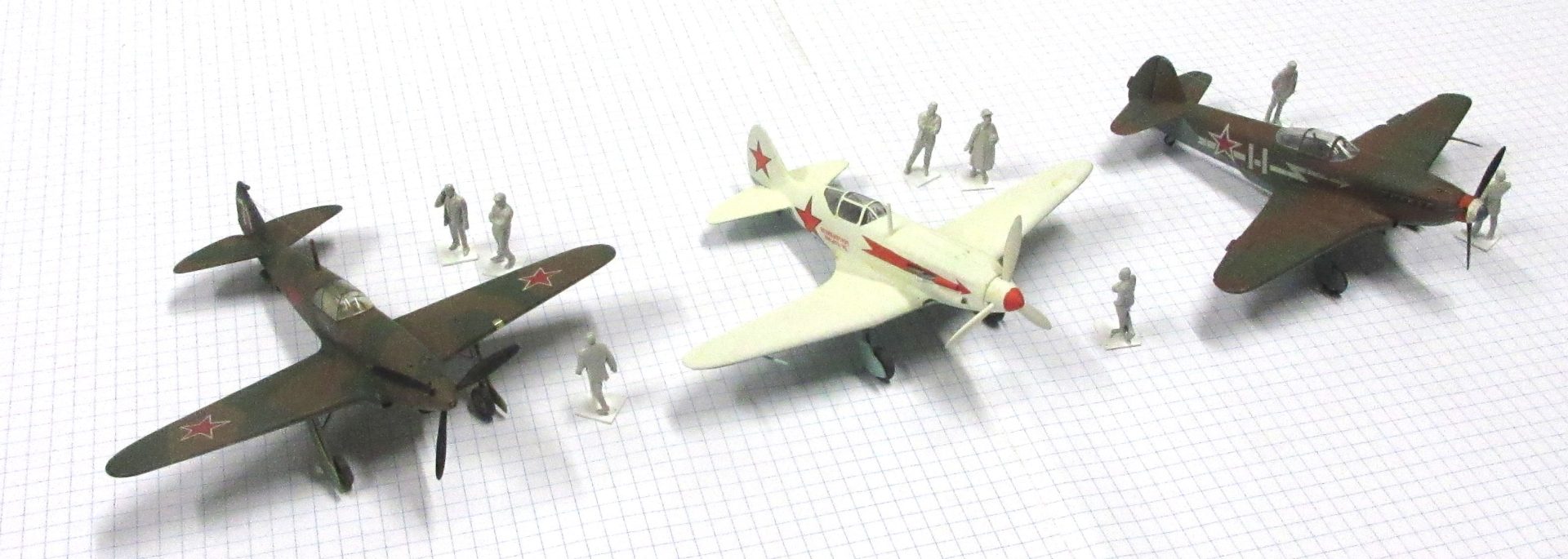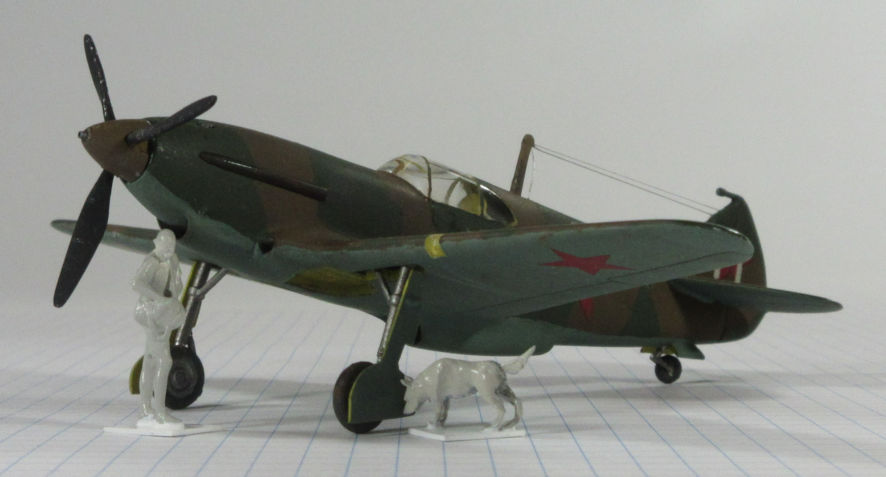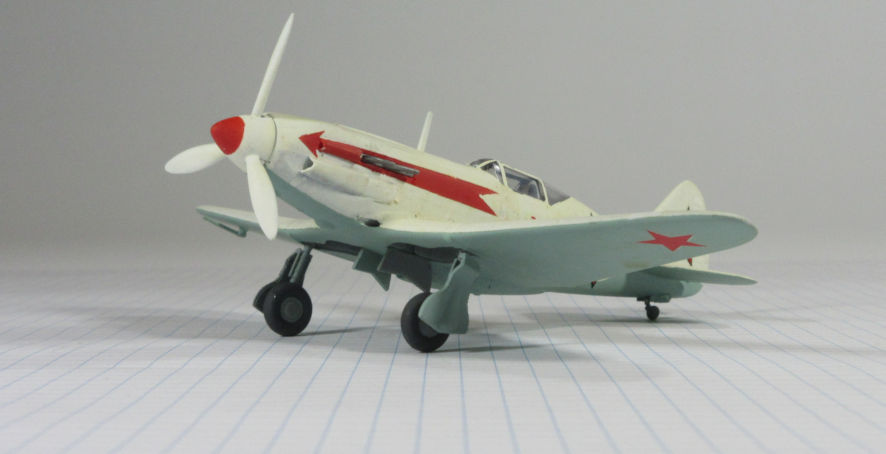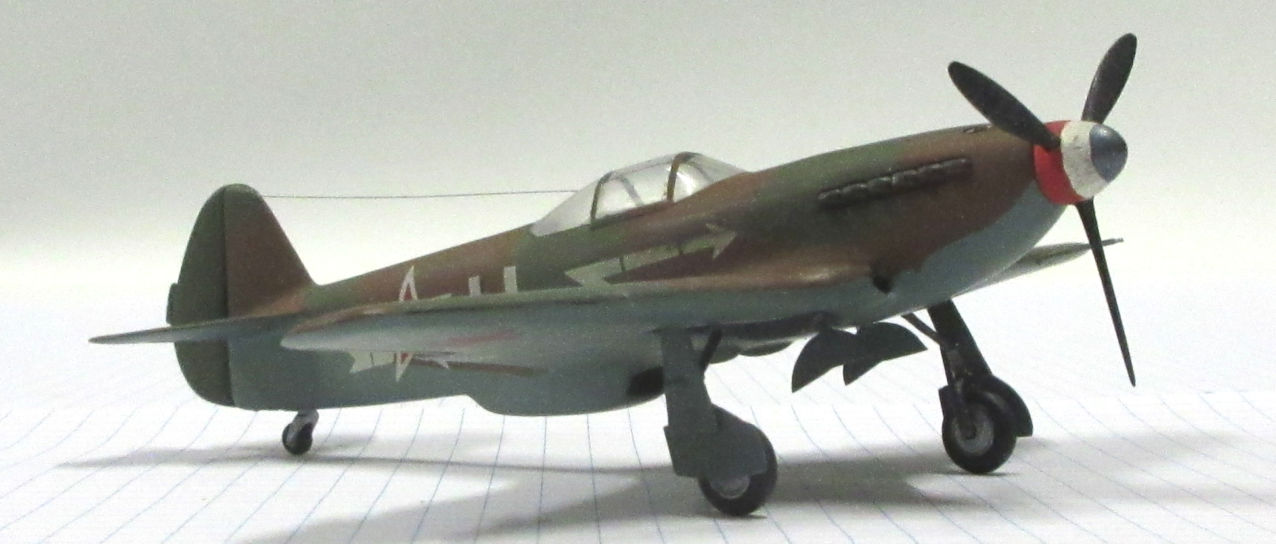Soviet World War 2 Fighters Three
LaGG-3 – MiG-3 – Yak-3

All the major fighting countries during World War 2 developed and flew a wide range of fighters. This was necessary because the rapid technological advances made during the war led to quick improvements so that an aircraft which was on the top of the heap one month was soon outclassed by enemy aircraft going through similar development cycles. This is evident with most countries but perhaps more so in Russia where it’s most modern fighters were outclassed in the middle of 1941 but were the equal of the world’s best by the end of the war. Let’s look at three Soviet aircraft which illustrate this development.
Lavochkin-Gorbunov-Gudkov LaGG-3 in 1/72 by Red Star
This aircraft was the first of the modern fighter flown by the Soviet air forces. They were of mainly wooden construction and poorly constructed, but they were given high priority and began entering service in early 1941. They were immediately disliked by their pilots because they were heavy, under powered, sluggish and dangerous to fly in certain conditions. They were effective against bombers but completely outclassed by the Messerschmitt Bf109F and their pilots called them the ‘guaranteed varnished coffin’. Even so, they remained in production until 1944 and over 6,500 were made.
This model was made from the Red Star kit from Russia, published in 1983. They were said to be one of the last moulds made by Frog, but not published before that company went out of business. Apparently the moulds were sold to a company in Russia and at first the only way to get them was in a brown cardboard box along with kits for the MiG-3, Yak-3 and a World War 1 aircraft. For Frog kits they were up to par with other late Frog kits and the only kits available for these aircraft available in the mid 1980s. If you come across a cheap kit it might be okay and value for money but more recent kits will probably require less work to make them satisfactory. Probably the best of more modern offerings is the ICM kit first published around 1993 which has since appeared in a number of boxes including Toko and Roden. The review of this kit on the Modeling Madness website says it is superior to the Red Star kit, accurate and well detailed. However, a build review on Hyperscale points out some problems with it. Scalemates mentions a Clear Prop release of a kit of this model but I can find no other mention of it.
Mikoyan-Gurevich MiG-3 in 1/72 by Hobby Boss
This aircraft was an improved version of the earlier MiG-1 which was found to have many faults and problems when first tested. The first MiG-3 flew in October 1940 and they began entering service in 1941, and over 1,000 were in service at the beginning of June 1942. They were difficult to fly, wracked by design and production problems and designed as high altitude interceptors. However, most aerial combat during the Great Patriotic War took place below 5,000 meters at which the MiG-3 was outclassed in every way be Messerschmitt Bf109s. Over 3,400 were manufactured before they were replaced on production lines by Il-2 ground attack aircraft and some remained in service as trainers at the end of the war.
Although I have the Red Star kit of this aurcraft I made the model from the 2005 Hobby Boss simplified kit. There is a 1978 moulding of this aircraft that seems to have been published by most main manufacturers but I don’t know what that kit is like. So the Hobby Boss kit is probably the best there is, at least in exterior looks, and gets a couple of good reviews in Hyperscale and Aircraft Resource Centre which acknowledge the problems with this simplified kit. The major problem with the Hobby Boss kit is with the cockpit and one build review I saw used the Revell boxing of the 1978 kit to provide a better cockpit for the Hobby Boss kit.
Yakovlev Yak-3 in 1/72 by Red Star
This aircraft was an improved version of the Yak-1 which was the best Soviet fighter at the beginning of the Great Patriotic War. That aircraft performed best at low altitude and was the equal of the Messerschmitt Bf109F in the hands of a good pilot but outclassed as improved versions of the German fighter came into service. Development of the Yak-3 began in 1942 and the prototype first flew in February 1943. It was one of the smallest, lightest and best fighters of World War 2, had a good power-to-weight ratio which made it an excellent dog-fighter which was well liked by its pilots. Over 4,800 were manufactured between 1944 and 1946.
There are a few kits of the Yak-3 apart from the 1983 Red Star one. They include Heller (1975) Hasegawa (1991) Amodel (2003), Hobby Boss (2009) and Zvezda (2011) with all appearing in a plethora of boxings. Fine Scale Modeler recommends the Zvezda kit which was ‘a quick and enjoyable build’. and IPMS-USA agrees.



